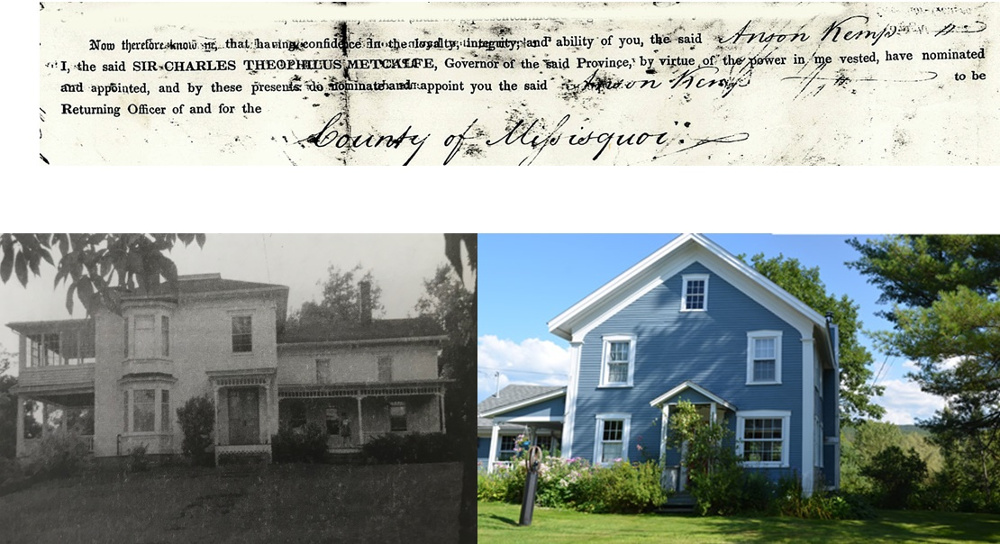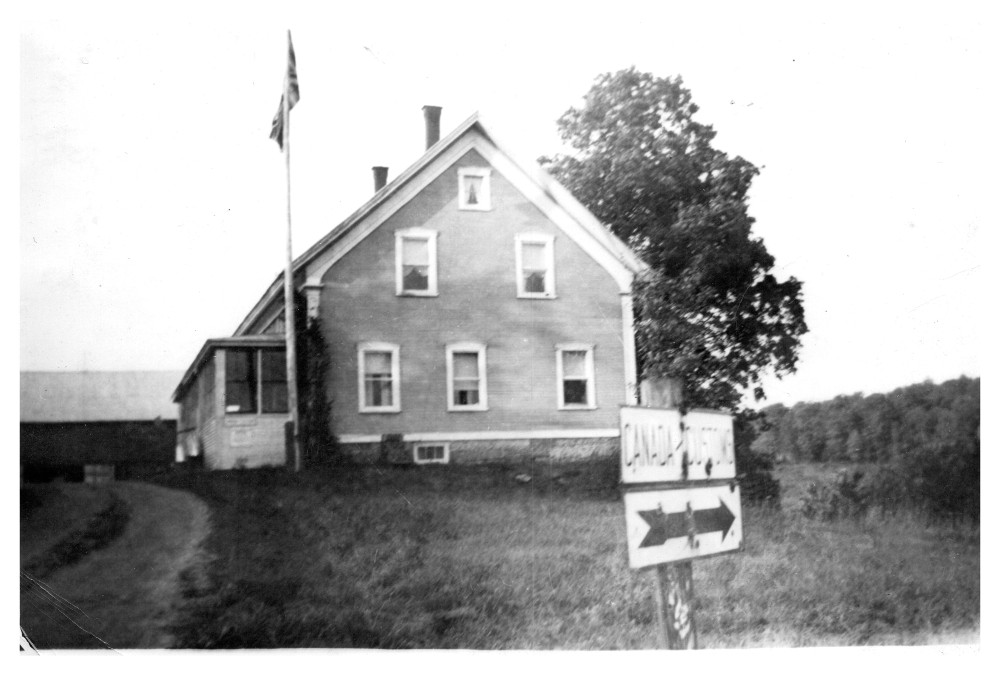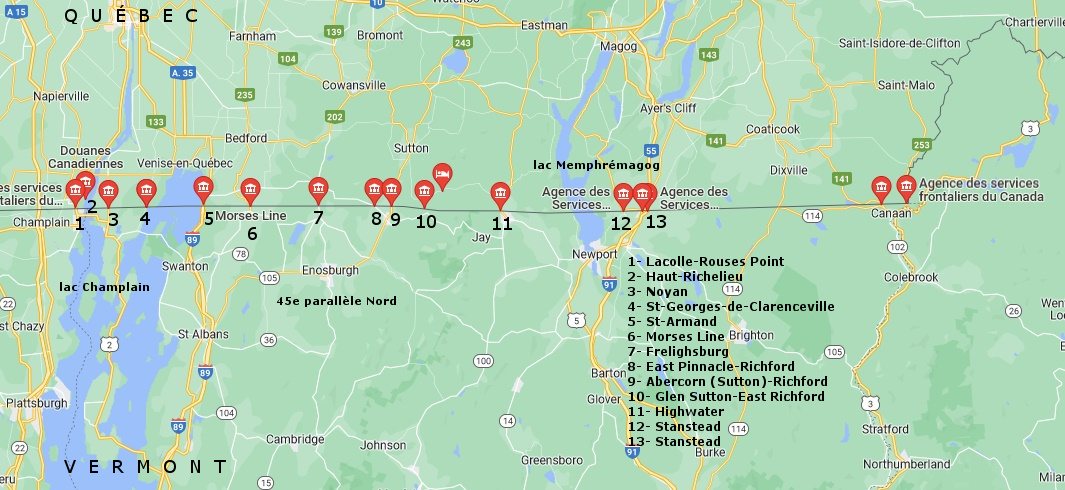The early days of the border
After the treaty was signed, customs posts began appearing all along the border. By 1850 there were five between Lakes Champlain and Memphremagog, at Philipsburg, Frelighsburg, Sutton, Potton (Troy) and Stanstead. The least active is the one in Sutton Township. Established in 1844, it was first run by Anson Kemp and later by Dr. Benjamin Seaton. It was renamed Abercorn in 1848 after the town’s newly opened post office adopted that name.

Anson Kemp was Sutton’s first customs officer, followed by Dr. Seaton, whose large Victorian house in Abercorn (left) served as a customs post, as did the former miller’s house (right).
Two other customs posts are later added along Sutton Township’s border — between East Pinnacle and Richford and between Glen Sutton and East Richford.
The practice of housing customs posts in private homes continued until the mid-20th century.
Iboya Szabo Hancock recounts the cohabitation involving her husband’s family and the East Pinnacle customs post in the 1930s and 1940s.

The Hancock family’s home in East Pinnacle housed a custom’s office for several decades. This photo was taken in the 1940s.
Recollections from Iboya Szabo-Hancock about the East Pinnacle customs post (captions available in both French and English). View this video with an English transcript.
The customs posts along the Vermont border are far apart, so many crossing points are unguarded and lack any real barriers.

A crudely barricaded road and a strip of paint on the ground are not enough to stop anyone who wants to cross the border between Canada and the United States.
Even former customs officers Wayne Kemp and François Cusson admit that the border with Vermont is not easy to guard.
Wayne Kemp and François Cusson discuss the complexity of customs work (captions available in both French and English). View this video with an English transcript.


